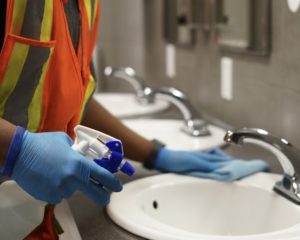Cleaning might seem simple. But in reality, handling cleaning products on a daily basis carries risks. Without the right techniques, proper protection, and a minimum of knowledge, these chemical products, even the ones used for routine cleaning, can harm the health of the people who handle them.
Exposure to Chemical Cleaning Products: What Are the Dangers?
Short-term effects
The immediate effects are the most noticeable:
-
Skin, eye, nose, or throat irritation
-
Coughing, nausea, headaches
-
Allergic reactions or asthma attacks, especially in poorly ventilated areas
These symptoms can appear and worsen when products are handled without proper protection.
Long-Term Effects
What’s more concerning is long-term exposure. Frequent contact, even in small amounts, can contribute to:
-
Chronic respiratory problems
-
Increased risk of certain cancers
📌 Also read: Eco-Friendly Cleaning: Our Concrete Actions for a Lasting Impact
What equipment is needed to handle cleaning products safely?
Handling chemical products requires the right products, of course—but also the proper equipment and techniques to avoid unnecessary exposure.

In practical terms, proper protection includes:
-
Durable gloves
-
A mask or respiratory protection in poorly ventilated areas or when using volatile products
-
Accurate product dosing and controlled application to avoid excessive use and chemical residue
-
A solid understanding of Safety Data Sheets (SDS) to apply the right precautions and respond appropriately in case of an incident
That’s exactly why many businesses choose to leave their cleaning needs to professionals. These teams are trained, well-equipped, and apply methods that reduce the risks of exposure.
📌 Also read: Eco-friendly vs traditional cleaning products: what really works?
In Summary
Cleaning isn’t just wiping surfaces. It involves handling chemicals that, if misused, can endanger the health of workers and occupants alike.
Training, protection, and the right product choices are essential to make cleaning truly safe.
Want safe, professional cleaning services? Rely on a well-trained, well-equipped team.